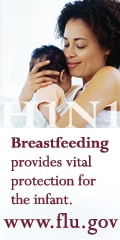Listed are some examples of December's National Food Days, Weeks and Month:
Eat a Red Apple Day (December 1)
Fruits and vegetables have been shown to reduce risk of heart disease, stroke, and some cancers. Most of us have heard the phrase "An apple a day keeps the doctor away." The best part about including apples into your diet is that they are low in calories and high in dietary fiber.
Oatmeal Muffin Day (December 19)
Adding oatmeal to your muffins gives them a nutritional boost! Oatmeal is classified as a whole grain and can help reduce blood cholesterol levels, high blood pressure, and obesity. Grabbing an oatmeal muffin makes a perfect on-the-go breakfast option. Make sure to add a glass of low-fat or nonfat milk on your way out.
Pumpkin Pie Day (December 25)
Pumpkin is an excellent source of vitamin A. Pumpkin pie is a great way to get vitamin A into your diet.
Handwashing Awareness Week (1st Full Week of December)
Handwashing is the most effective way to prevent the spread of illness according to the Centers for Disease Control and Prevention. Help promote handwashing at your work or community site.
Egg Nog Month
Beware of drinking eggnog made with raw eggs during the holidays! Many older classic holiday recipes call for raw eggs. This cooking practice is not considered safe because of possible Salmonella infection.
Food Safety Tips for the Holiday
Make sure to keep your family and friends safe during the holidays. Food safety may not be important for you during the holidays, but it is essential in order to keep your family and friends from getting a foodborne illness.
Healthy Holiday Tips
Avoiding Holiday Weight Gain (Not a special day ... but a recurring theme throughout the month!)
Extra calories can sneak in over the holidays. They don't always come in large portions, but can tiptoe in through tiny tastes throughout the day.
Pear Month
Many fruits are out of season during the winter months. Pears are available fresh during this time.




